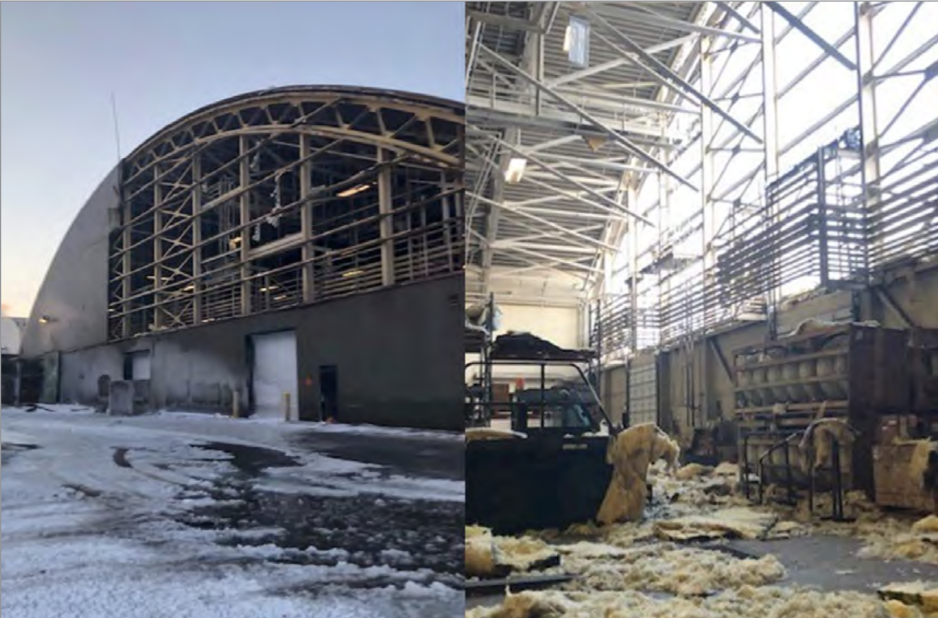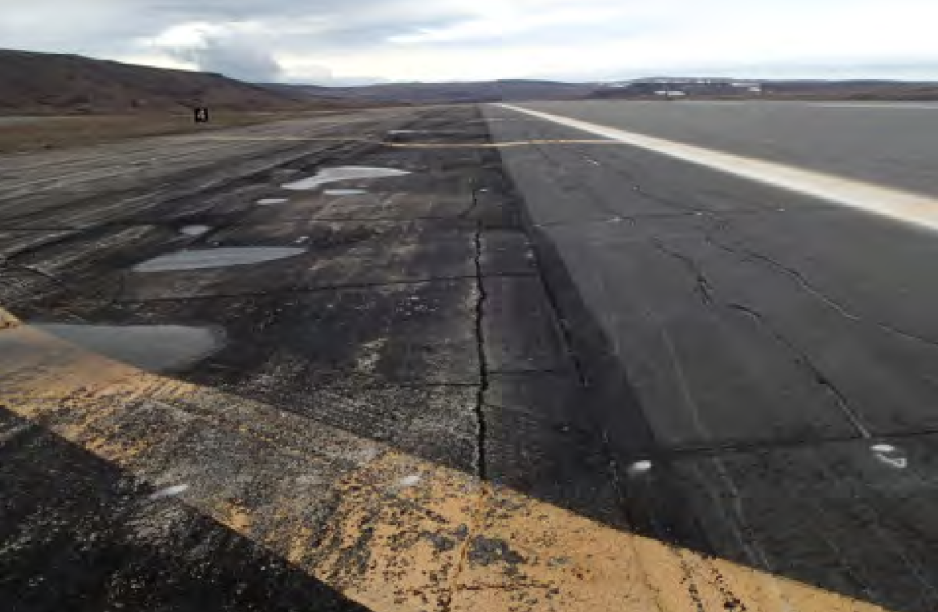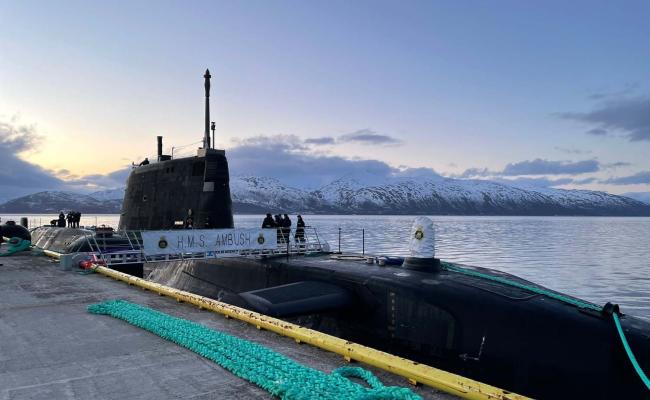U.S. Arctic and Sub-Arctic Military Bases Are Unprepared For Impacts of Climate Change

A view of the ramp at Thule Air Base in Greenland. (Source: NASA).
A new U.S. Department of Defense report focusing on the climate resilience of the country’s military installations in the northern latitudes concludes that the U.S. military is failing to prepare its facilities for the challenges of long-term climate change.
A new Pentagon report assessed the climate change readiness of six U.S. Army and Air Force bases in the Arctic and Sub-Arctic. The study was conducted by the Inspector General of the Department of Defense and paints a bleak picture.
Even though soaring temperatures and melting permafrost are already damaging military infrastructure, including air base runways, roads and building foundations, leaders of military bases have failed to identify climate change risks and have not included them in decision making processes.
The U.S. military has repeatedly acknowledged the threat of climate change to national security.
The study concludes that “most installation leaders at the six installations […] in the Arctic and sub-Arctic region were unfamiliar with military installation resilience planning requirements, processes, and tools, and installation leaders did not comply with requirements to identify current and projected climate-related environmental risks, vulnerabilities, and risk reduction measures, or incorporate these considerations into plans and operations.”
The report’s conclusions stand in contrast to a host of presidential orders and laws mandating the armed forces to include climate change resilience in their activities. The U.S. military has repeatedly acknowledged the threat of climate change to national security arising from more frequent extreme weather events and natural disasters and their impacts on military infrastructure and personnel.

Storm Damage to Hangar 7, Eareckson Air Station. (Source: 611th Civil Engineering Squadron)
Visiting six bases across the North
The report titled “Evaluation of the Department of Defense’s Efforts to Address the Climate Resilience of U.S. Military Installations in the Arctic and Sub-Arctic” was released by the Inspector General, an investigative official providing oversight over the U.S. armed forces.
Officials visited six bases across Alaska and Greenland documenting adverse effects of climate change on infrastructure and conducted in-depth interviews with local military officials. The aim of the study was to determine if the Department of Defense has incorporated climate resilience in its northern military installations.
The bases visited include Joint Base Elmendorf-Richardson (JBER), Clear Space Force Station, Eielson Air Force Base, Fort Wainwright, Fort Greely all located in Alaska and Thule Air Base in Greenland.
The report also highlighted that impacts of climate change on military infrastructure are already occurring in the present.
The study identified two main shortcomings. Most military base leaders were unfamiliar with the requirements related to climate change such as the need to identify current or future climate-related environmental risks or vulnerabilities for their bases or develop plans to reduce these risks and incorporate them into their operations.
And even those military leaders who were familiar with the requirements did not comply with the prescribed infrastructure resilience assessments nor did they engage in planning for climate resilience, both of which are required under Department of Defense directives and public legislation.

Cracks and depressions on runway and shoulder caused by water thawing and refreezing, Thule AB, Greenland. (Source: Department of Defense, OIG)
Focusing on day to day challenges
When investigating why those in leadership positions were unaware of climate resilience requirements or did not comply with the requirements, officials identified three main causes.
Military installation leaders were often focused on present-day challenges arising from weather and environmental conditions, rather than analyzing future vulnerabilities arising from climate change. Furthermore, there was unclear guidance from the Department of Defense on how to implement resilience assessments. And lastly, installation leaders or planners suffered from a lack of resources to analyze climate change and implement changes.
Crumbling runways
The report also highlighted that impacts of climate change on military infrastructure are already occurring in the present. While large parts of the study detailing specific damage at the military bases are blacked out in the public version of the report, it nonetheless identified a number of examples, including the crumbling runway at the Thule Airbase, a damaged hangar at Eareckson Air Station, and buckling roads at Eielson AFB.

Ammunition Bunker Wall Separation Due to Frost Heaving, Eielson AFB, Alaska. (Source: Department of Defense, OIG)
The Inspector General offers several recommendations on how to close the gap between the Pentagon’s official climate resilience policy and its implementation on the ground. A key suggestion is that the Department of Defense incorporates climate change adaptation and resilience policy into all its master planning requirements for major military installations.
It furthermore recommends that better training resources be made available by the Pentagon to enable military base officials to “establish priorities, develop milestones and identify planning needs.”



